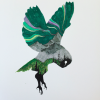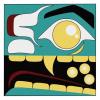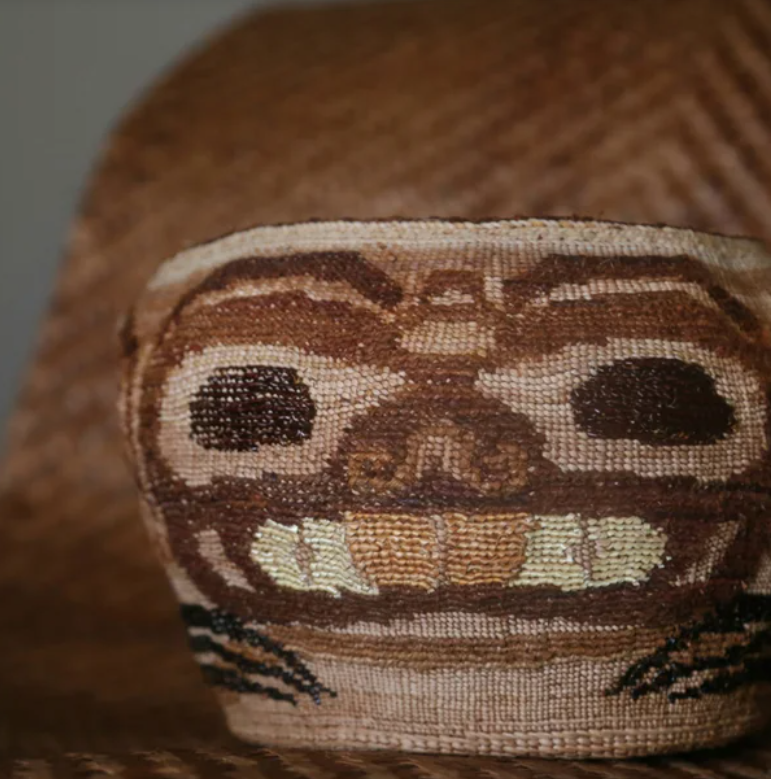Savannah LeCornu




















The Haida, an indigenous people native to the Haida Gwaii archipelago off British Columbia’s west coast and parts of southeast Alaska, have a rich artistic heritage that spans millennia. Their art is characterized by its fluidity, intricate details, and the deep symbology that connects the pieces to the Haida's beliefs, history, and natural environment. Haida art traditionally features emblematic figures such as the Raven, Eagle, Orca, and Bear, which often represent clans or important stories.
Historically, Haida art played a functional role in society, as well as a ceremonial one. From the towering totem poles that narrate familial histories and ancestral stories to ornately carved wooden bowls, bentwood boxes, and ceremonial masks used in dance and storytelling, Haida art was integral to daily life and cultural expression. The craftsmanship of these pieces is world-renowned, with particular attention to the balance of form, line, and negative space.
Contemporary Haida artists have beautifully managed to bridge the gap between the traditional and the modern. While they still honor the historical roots of their craft, many have incorporated newer materials and techniques to tell stories that resonate with the challenges and experiences of the present day.
Artists like Robert Davidson and Jim Hart have garnered international acclaim, both revitalizing traditional Haida forms and pushing the boundaries of what Haida art can be. Davidson, for instance, has introduced abstract forms into his work, a departure from the strictly representational forms of the past. Meanwhile, other artists like Michael Nicoll Yahgulanaas have introduced completely new genres like "Haida Manga", which blends Haida visual principles with the graphic art style of Japanese manga.
Another remarkable aspect of contemporary Haida art is its commitment to community and activism. Many Haida artists are deeply involved in cultural preservation and environmental activism, especially in light of challenges posed by logging, overfishing, and climate change in their ancestral lands. Their artwork often becomes a powerful tool to communicate these concerns to a broader audience.
Additionally, modern-day Haida art is not limited to physical media. Digital art, film, and music are also becoming prominent ways in which Haida artists express themselves and convey their rich heritage. The continued adaptation and evolution of Haida art ensure its relevance and importance in a constantly changing world.
In summary, Haida art embodies the resilience and adaptability of a culture deeply rooted in its history yet vibrantly alive in the present. As you explore this section, you'll be immersed in the mesmerizing world of Haida artistry, a harmonious blend of time-honored tradition and innovative contemporary expression.

























Native Arts 360's a.i.m. is to promote Indigenous art and culture year round so we collectively expand what it means to celebrate Indigenous peoples contributions beyond the month: acknowledge and appreciate the beauty of the original peoples as they deserve to be.
Join us for the Native Arts 360 exhibit "Thriving" in collaboration with COf& in celebration of Indigenous Peoples' Day in the lead up to Native American Heritage month through the month of October 2023 opening Friday, October 6 at noon.
Lummi and Nooksack artist Jason LaClair, Savannah LeCornu ( Tsimshian, Haida, Nez Perce) and Kaa Shayee (Tlingit) will share their bold designs in vibrant palettes - with highly disciplined Coast Salish and form line design incorporated into their epic stylized visions.

Jacinthe Demmert is a craftsman of the Haida Nation. She learned Haida basketry from her mother, MotherLeCornu and Haida formline art from her father, Adrian LeCornu. She has spent her lifetime weaving.